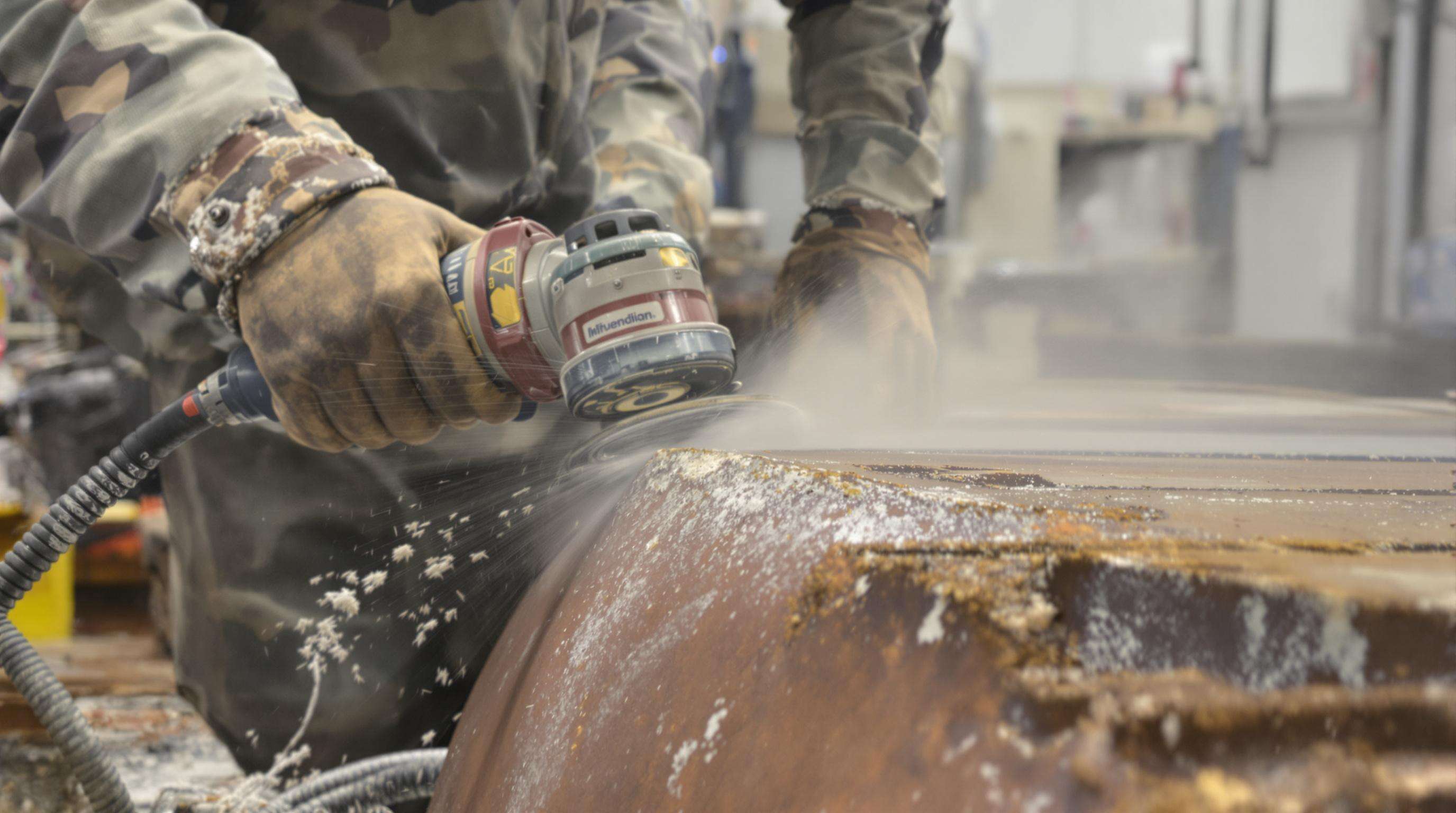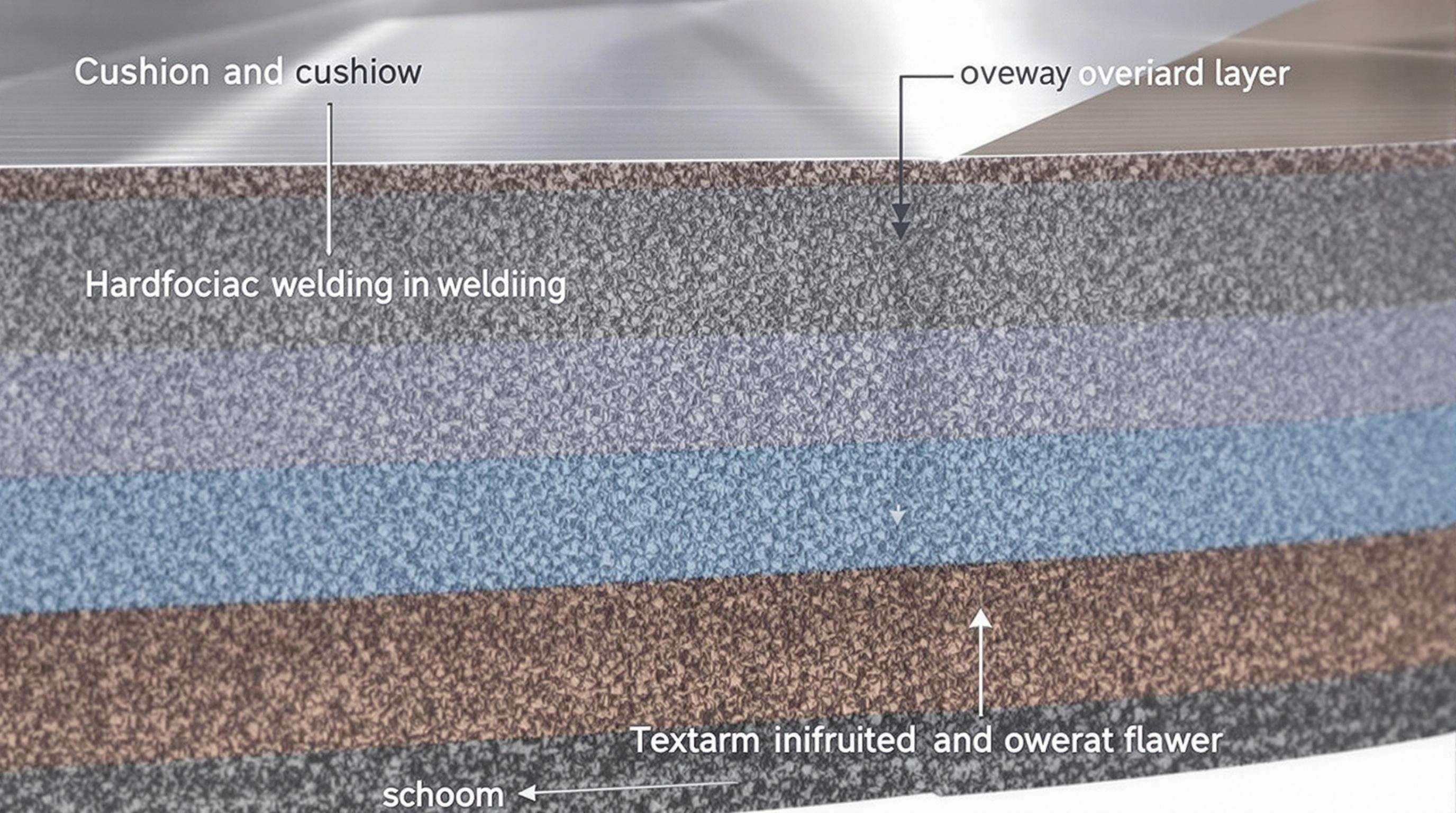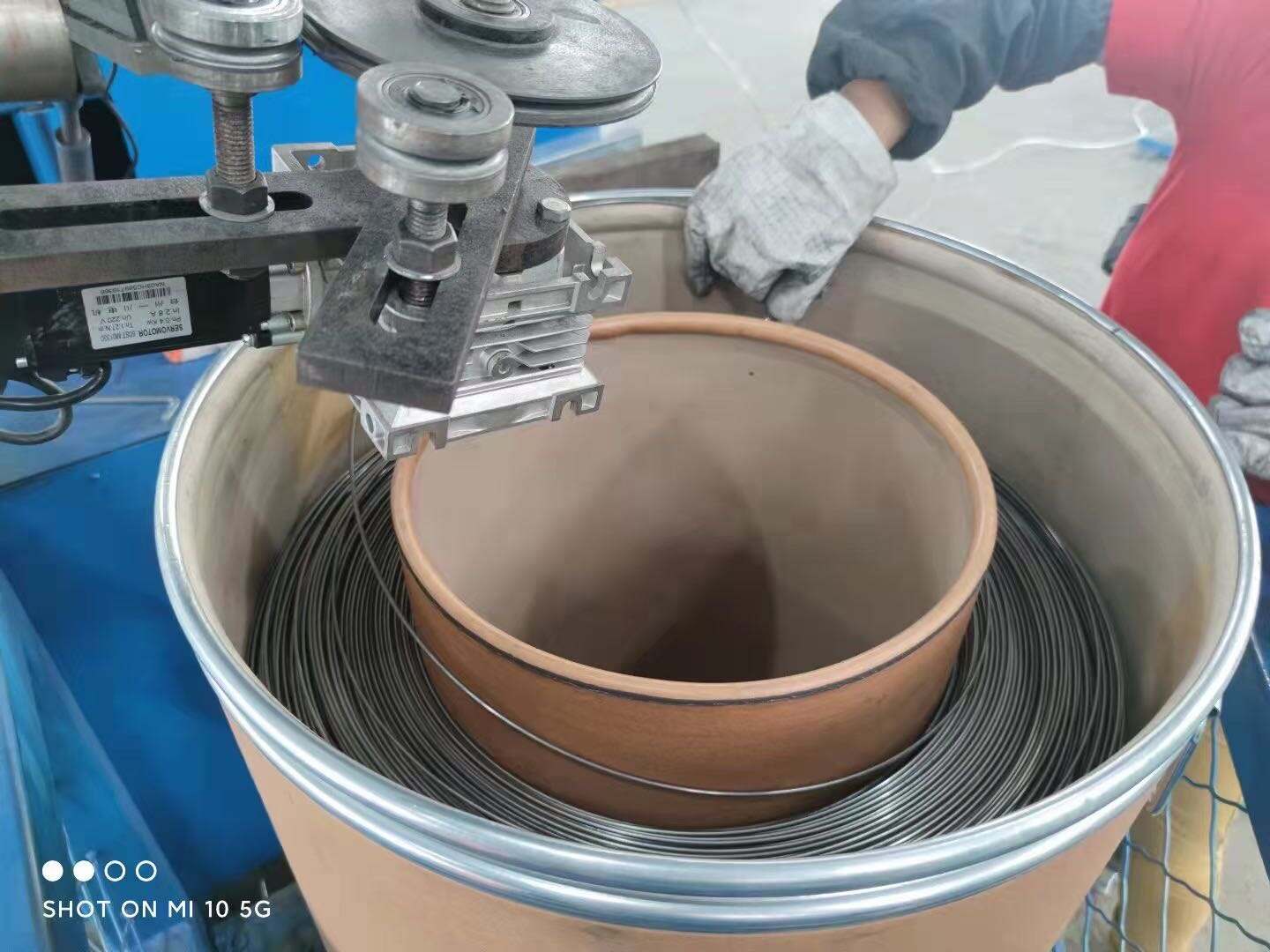Understanding Hardfacing Welding Wire: Purpose and Key Benefits
What is hardfacing and how does welding wire enhance wear resistance?
Hardfacing welding wire applies a protective alloy coating to metal surfaces using arc welding techniques. The process adds materials such as chromium carbide and tungsten carbide to the base metal, creating a barrier that stands up to wear, impacts, and corrosive environments. Take conveyor screws used in gravel processing plants for instance these components last around three times longer when coated with hardfacing wire, based on recent research from materials science journals published last year. Many industrial operators have seen significant cost savings from this treatment, especially in applications where equipment faces constant abrasive forces day after day.
Extending equipment durability in high-wear environments
Hardfacing wire that's applied correctly can cut down wear rates anywhere between 70 to 85 percent when dealing with tough environments like mineral processing plants or metal recycling operations. According to figures published by the American Welding Society, machines last roughly 40 to 60% longer than their untreated counterparts. What makes this work so well is the special alloy makeup which stops parts from breaking down too soon. We're talking about critical components here - those big crusher jaws that get battered daily, the heavy duty bulldozer blades scraping across rough terrain, even the drill bits that face nonstop friction underground. The difference in performance is night and day for companies operating in these harsh conditions.
Industry applications: Recycling, mining, and construction equipment protection
- Mining: Prolongs shaker screens and rock crusher liners subjected to abrasive ores
- Recycling: Shields industrial shredder blades from metal fragment wear
-
Construction: Extends paver screw augers’ functionality in asphalt mixing
This technique also benefits agricultural tillage tools and offshore drilling components, delivering return on investment within 6–12 months through reduced part replacements.
Proper Preparation for Successful Hardfacing Welding Wire Application

Surface Cleaning and Material Preparation Best Practices
Getting good results from hardfacing starts with really clean surfaces. Rust, oil stains, and mill scale can cut down on bond strength quite a bit actually – somewhere around half according to what I read in the Journal of Materials Engineering last year. Most folks will grind away at these contaminants or use solvents to get down to raw metal underneath. Cracked spots and those rough patches need special attention too, so many technicians prefer gouging them out completely. When working with manganese steel parts specifically, blasting with abrasives tends to work best because it leaves behind a kind of rough texture that helps everything stick together better in the long run.
The Importance of Preheating to Prevent Cracking and Thermal Shock
Preheating carbon steel substrates to 300–400°F reduces cooling stress and prevents hydrogen-induced cracking, a leading cause of hardfacing failures. A 2023 AWS study found controlled preheating lowers crack rates by 34% in mining equipment repairs. Avoid exceeding 500°F for martensitic steels to prevent softening, and use infrared thermometers for real-time monitoring.
Ensuring Material Compatibility and Controlling Dilution for Optimal Bond Strength
When filler and base materials don't match up properly, they tend to spall when subjected to repeated loads. Take chromium carbide wires for instance. These need some kind of buffer layer applied to low carbon steel surfaces if we want to keep dilution rates under control, ideally staying below around 20%. If there's too much mixing going on, say over 30% dilution, then the carbides just won't form properly anymore and the material becomes significantly less resistant to wear. Around 50 to 70 percent bead overlap seems to work best in practice. This range helps achieve good coverage while still managing heat distribution effectively during the process.
Optimal Deposition Techniques and Layering Strategies

Cushion vs. Overlay Layers: Maximizing Protection with Hardfacing Welding Wire
Cushion layers act as a thermal buffer between the base material and the final hardfacing deposit, while overlay layers provide direct wear resistance. Recent metallurgical studies show that thinner cushion layers (1–2 mm) reduce residual stresses by 20–35%, improving bond strength and fatigue resistance in high-impact equipment like crushers and shredders.
Bead Overlap and Uniform Deposition for Consistent Coverage
Achieving 30–50% bead overlap prevents weak spots and ensures homogeneous protection. Controlled wire feed rates (4–6 m/min) paired with travel speeds of 12–18 cm/min optimize deposition efficiency without compromising integrity.
| Technique | Parameter Range | Impact on Hardfacing Quality |
|---|---|---|
| Bead Overlap | 30–50% | Eliminates micro-cracks |
| Interpass Cooling | 100–150°C | Reduces distortion by 40% |
Managing Heat Input to Prevent Distortion and Cracking
Alternating weld directions between layers improves heat dissipation, minimizing temperature gradients by up to 60%. Preheating to 200–300°C and maintaining interpass temperatures below 400°C mitigates thermal shock in brittle materials like high-carbon steels.
Debunking the Myth: Thicker Layers Don’t Always Extend Service Life
Excessive deposit thickness (>6 mm) increases cracking risks by 55% due to accumulated residual stress. Field data reveals that 3–4 mm multilayer hardfacing applied with 0.5–1 mm interlayer offsets improves service life by 30% over single 8 mm deposits in mining conveyor systems.
Avoiding Common Mistakes and Troubleshooting Hardfacing Issues
Identifying Causes of Cracking, Spalling, and Poor Adhesion
About two thirds of all hardfacing problems on heavy equipment come down to heat management issues and poor cooling techniques. When too much heat gets into the material, it creates internal stresses that eventually crack the surface and cause parts to break away prematurely. Contamination of the base metal also plays a role, weakening how well everything sticks together. And if things cool down too fast, say under 300 degrees Celsius per minute, there's around a 35% higher chance of those annoying spalling problems. Then there's the whole issue of mixing incompatible materials. Take for instance when someone tries to apply high carbon hardfacing wire onto low alloy steel. This mismatch just makes everything worse, leading to dilution problems that cut wear resistance nearly in half according to what we see out in the field.
Post-Weld Inspection and Corrective Actions for Failed Deposits
Implement a three-step inspection protocol:
- Visual checks for cracks or uneven bead patterns
- Magnetic particle testing to detect subsurface flaws
- Hardness mapping to verify uniform wear resistance
For localized failures, grind affected areas to sound metal and reapply hardfacing wire with reduced heat input (20–25% lower amperage). Severe spalling requires complete removal of the deposit and substrate preheating to 150–200°C before rewelding.
Case Study: Hardfacing Failure Due to Improper Cooling in Industrial Shredders
Looking at shredder hammer hardfacing data from 2023 showed something interesting many operators had been missing out on. When they skipped those short cooling breaks between passes, it led to these nasty thermal shock cracks forming in the chromium carbide deposits. What happened when we actually implemented some forced air cooling between each layer? The results were pretty impressive really. Crack density dropped nearly 90%, and the hammers lasted way longer too – around three times as long as before, going from about 400 hours to over 1,100 hours of operation. And here's what everyone should remember: there's this delicate dance between how fast you weld and managing heat properly. Even taking just half a minute extra to let things cool down between passes makes a huge difference. We saw deposit integrity jump by almost 40% simply by adding that brief pause.
Maximizing Equipment Lifespan and Reducing Downtime with Hardfacing Welding Wire
Cost savings through extended part life and reduced replacements
Hardfacing wire enables strategic lifecycle management by rebuilding worn components rather than replacing them. Recycling facilities using hardfaced shredder components reduce replacement part expenditures by 27% annually through material reclamation. This approach proves particularly effective for crusher hammers and bulldozer blades subjected to impact wear in mining operations.
Minimizing operational downtime in high-wear applications
Properly applied hardface layers extend maintenance intervals by 40–65% in gravel processing plants and demolition equipment. The key lies in maintaining consistent deposition thickness (2.5–3.2 mm optimal) on high-stress areas like conveyor screw flights, achieving 18–24 months between refurbishments versus 9–12 months for untreated parts.
Performance data: 40–60% increase in equipment life with proper hardfacing (source: AWS)
Controlled studies by welding authorities confirm equipment service life improvements of 40–60% when combining hardfacing wire with proper preheating (204–316°C) and interpass temperature controls. Excavator bucket teeth demonstrate particularly strong results, with impact-resistant alloys showing 2.8x longer lifespan than standard components in granite quarry applications.
FAQ Section
What is hardfacing welding wire?
Hardfacing welding wire is a special type of arc welding material used to apply protective alloys like chromium carbide to metal surfaces to enhance wear resistance.
How effective is hardfacing at extending equipment life?
Hardfacing can extend equipment life by up to 60% according to studies, because of reducing wear and improving resistance in harsh environments.
What industries benefit most from hardfacing?
Industries such as mining, recycling, and construction benefit significantly from hardfacing due to the increased durability of equipment subjected to abrasive forces.
Table of Contents
- Understanding Hardfacing Welding Wire: Purpose and Key Benefits
- Proper Preparation for Successful Hardfacing Welding Wire Application
- Optimal Deposition Techniques and Layering Strategies
- Avoiding Common Mistakes and Troubleshooting Hardfacing Issues
- Maximizing Equipment Lifespan and Reducing Downtime with Hardfacing Welding Wire
- FAQ Section

